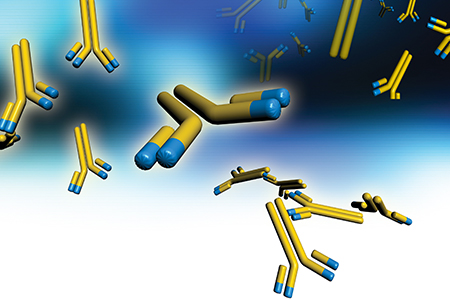 Spontaneous lupus erythematosus (SLE) is a chronic autoimmune disease with an unclear cause. Nearly all lupus patients have high levels of anti-nuclear antibodies with a relatively high proportion being pathogenic anti-Ro protein antibodies. At the end of March, researchers at Yale University published a paper entitled "Commensal orthologs of the human autoantigen Ro60 as triggers of autoimmunity in lupus" in the journal Science Translational Medicine in which the authors demonstrated that Ro60 orthologs exist in commensal bacteria commonly found in or on the human body.
Spontaneous lupus erythematosus (SLE) is a chronic autoimmune disease with an unclear cause. Nearly all lupus patients have high levels of anti-nuclear antibodies with a relatively high proportion being pathogenic anti-Ro protein antibodies. At the end of March, researchers at Yale University published a paper entitled "Commensal orthologs of the human autoantigen Ro60 as triggers of autoimmunity in lupus" in the journal Science Translational Medicine in which the authors demonstrated that Ro60 orthologs exist in commensal bacteria commonly found in or on the human body. Greiling et al. demonstrated in human and mouse studies that these bacterial orthologs of Ro may generate autoimmune responses that drive lupus. The authors revealed that a high level of homology exists between the major T and B cell epitopes within human Ro60 (hRo60) and commensal Ro60 orthologs. Antibodies from anti-Ro60 positive lupus patients, but not negative control patients preferentially coimmunoprecipitated Ro60 ribonucleoproteins (RNPs) from a Ro60 ortholog-containing commensal organism. Further demonstrating the cross-reactivity of orthologous Ro60, hRo60-reactive T cell clones, and freshly isolated anti-Ro60-positive memory T cells responded to epitopes derived from commensal Ro60 in vitro.
To establish that anti-Ro responses can be generated in vivo following colonization with a commensal organism, the researchers utilized a germ-free mouse model. Germ-free C57BL/6 mice were associated with a single commensal organism for three to five months. During this colonization period, 100% of the commensal-associated mice developed anti-hRo60 antibodies as detected by enzyme linked immunosorbent assay (ELISA). To further demonstrate the role of commensal derived Ro60 in lupus, the authors used an inducible model for lupus. Briefly, when germ-free mice were monocolonized with a commensal organism and treated with a toll-like 7 receptor (TLR7) agonist they developed anti-hRo60 responses and detected lupus nephritis-like immune complex deposition in 88% of all glomeruli of the treated mice compared to less than 10% deposition in control animals treated with a TLR7 agonist alone.
This work clearly shows that immune responses that are cross-reactive to commensal Ro60 are a mechanism to induce autoreactivity to the Ro60 autoantigen in lupus. Prevention of these autoimmune responses by either inhibiting immune responses to hRo60 or targeting the microbiome to prevent initial immune responses to cross-reactive orthologs of Ro60 may be avenues for therapeutic development in lupus.















.jpg)

.jpg)
.jpg)
.jpg)
.jpg)





.jpg)


.jpg)
.jpg)

.jpg)


.jpg)





.jpg)

.jpg)




